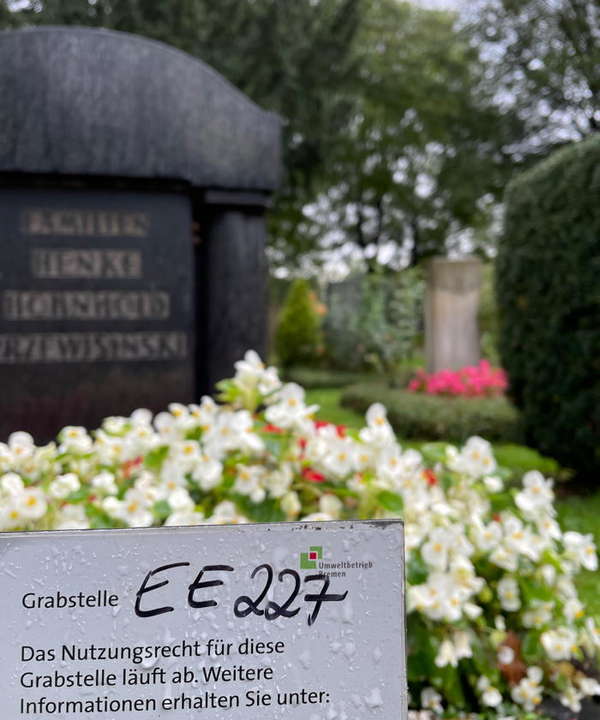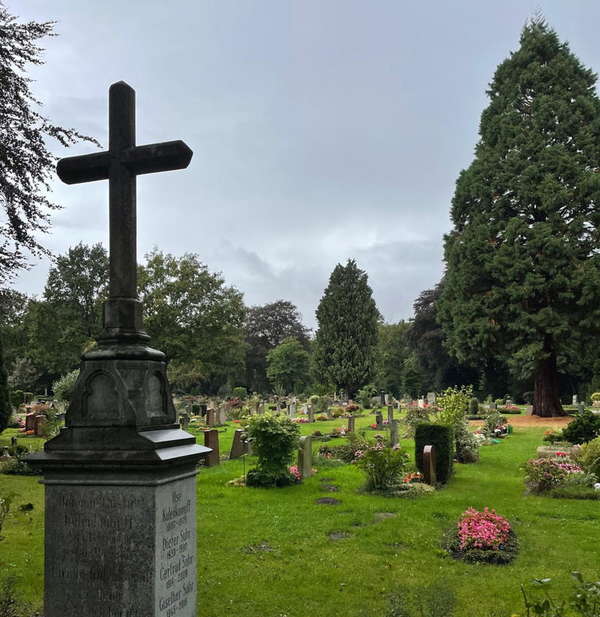Why can't I visit my ancestor's grave?
- 17. September 2022 - Genealogy, General, Germany, Knowledge
Today we would like to address a frequently asked question from our foreign clients, the answer to which always causes astonishment.
In the USA and also in other countries, graves are usually laid out for eternity. In Islam or Judaism, too, eternal rest for the deceased is supposed to be guaranteed. Accordingly, we often receive inquiries about the resting places of ancestors to be visited during a trip, or requests for photos of the gravesites. Unfortunately, this is often not possible in Germany.
Of course we can try to find out where an ancestor was buried, but whether the grave still exists is a completely different question.
Resting periods
In Germany it is (for genealogy one must say unfortunately) today usual that only a right for grave use is acquired for a limited period of time, the grave thus only "rented". This has historically seen mainly space reasons. The duration of the right of use, the so-called resting or lying period, depends on local regulations. The resting of the dead should be kept and the deceased should be as completely decomposed as possible; likewise, the bereaved should have a place to mourn.
The duration of the resting periods varies depending on the type of grave and the cemetery (occupancy and soil conditions). Among other things, the decomposition time is decisive. In acidic soils, decomposition progresses faster, while clayey soils slow it down. The minimum resting periods result from the respective burial and cemetery laws of the federal states. In Baden-Württemberg, Brandenburg and Hesse, for example, they are 15 years, in Berlin, Mecklenburg-Western Pomerania, Lower Saxony and Saxony 20 years. However, the actual resting periods can vary from cemetery to cemetery. In general, it can be said that earth graves in Germany last about 20-30 years, shortened to about 10-20 years for children, and urn graves usually 10-25 years. For tombs or with very clayey soils however usually much longer periods apply. In the case of family graves, the period applies from the burial of the last person.
Depending on the type of grave, it may be possible to extend the rights of use of the gravesite after the required resting period, subject to a fee. In the case of so-called choice graves, this is often possible for an unlimited period.
If the grave is not extended, it is dissolved and reallocated. It must then be cleared, i.e. the gravestone and other grave decorations must be removed (by the relatives or at their expense). The grave is then leveled by the cemetery or the cemetery nursery. When needed, the grave will be reassigned afterwards. If there are still remains of the body, they will be reburied if necessary (under the new grave or in certain areas of the cemetery). Urns, if applicable, are also usually interred in an anonymous urn field after the resting periods have expired. The cemetery laws of the federal states regulate the exact handling in these cases.
However, there are also exceptions to this practice. For example, some cemeteries do offer "eternal graves" with indefinite resting periods, either for people who have religious reasons or possibly for other reasons. So it depends very much on when, how and where your ancestors were buried, whether traces can still be found in a cemetery today. As a rule, however, unfortunately no grave will be found. All the more important for genealogical research are projects in which gravestones are photographed.
By the way, in Germany there is the so-called cemetery obligation. Accordingly, urns may not be kept in the house of the relatives and scattering of ashes is usually not permitted either - or only in the cemetery. However, this is quite controversial and has been partially loosened in Bremen (where the ashes may now be scattered in certain places).
In contrast to the grave, the gravestone is the property of the relatives and can be dealt with individually after it has been cleared.

Historical cemeteries, graves and gravestones
Nevertheless, German cemeteries are places of remembrance and history that are well worth visiting (compare our blog posts on cemetery 2.0 and 3.0).
In addition to surviving historic cemeteries, cemeteries that are still in use today also have an interest in preserving certain graves - or at least the gravestones - in the long term: For example, if they are particularly old/historically valuable or particularly artistic gravestones or grave designs that positively shape the image of the cemetery, or in the case of famous and/or for the (city) history important personalities. Therefore, despite the comparatively short resting periods, older graves or compositions of old gravestones (independent of the original graves) can be found in cemeteries. Special provisions also apply to graves of victims of war and tyranny.
And Jewish cemeteries are, of course, designed for eternity in Germany as well. However, unfortunately, they were often desecrated and destroyed during the Nazi era. A visit to the preserved Jewish cemeteries is partly only possible by appointment.


0 comments